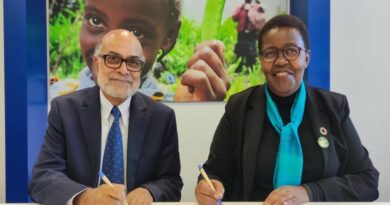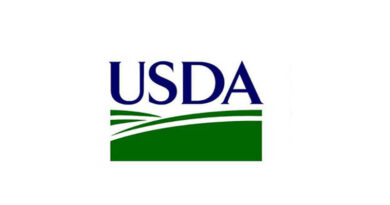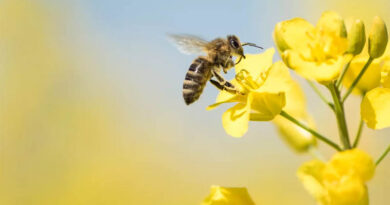Address at icrisat’s 50th anniversary celebrations in zimbabwe
22 April 2022, Bulawayo: The International Crops Research Institute for the Semi-Arid Tropics (ICRISAT) continues to mark 50 years of scientific innovation and impact with celebrations held in Zimbabwe.
The Hon. Dr Anxious J Masuka Minister of Lands, Agriculture, Fisheries, Water and Rural Resettlement graced the celebratory proceedings in Bulawayo and congratulated ICRISAT on winning the Africa Food Prize 2021 while lauding the Institute’s efforts in the fight against food insecurity and malnutrition.
Complete speech
“It is my singular honour and privilege to address all of you here present, gathered to celebrate this golden jubilee under the theme: “Championing Future Grains in Eastern and Southern Africa.
I am very happy to be a part of this milestone. It has been 50 years of scientific innovation and impact since ICRISAT was established on the 28th of March 1972.
Although ICRISAT as an organization was established in India on the 28th of March 1972, it did not hesitate to heed to a call made to it by the SADC head of states to open another home in Southern Africa, and therefore spearhead a program of improving sorghum and millet in the region which was called the Sorghum and Millet Improvement Program (SMIP).
It was in 1983 therefore that the SADC ICRISAT Sorghum and Millet Improvement Program was launched in Zimbabwe on land that was generously donated by the Government of Zimbabwe at Matopos Research station.
The SADC/ICRISAT Sorghum and Millet Improvement Program headquartered in Matopos, Zimbabwe was a partnership-based approach involving participating SADC governments and mainly funded by USAID.
The main aim of establishing ICRISAT was to address the problems of the looming food insecurity and nutrition in the region then and ICRISAT’s mandate is still very important now, especially with climate change issues.
The emphasis, therefore, was on food crops, especially small grains and legumes, those grown in the semi-arid and marginal areas of the region.
Through the SADC programs, ICRISAT in Zimbabwe focuses on future grains improvement, ICRISAT Malawi on Groundnut Improvement
ICRISAT pursues research for development to improve smallholder farming systems in the context of societal and environmental challenges;
Also Read: India targets 3,280 lakh tonnes food grain production in 2022-23
ICRISAT’s research work over the years has resulted in:
- Development of high-yielding varieties and hybrids of future grain crops. Just recently, in 2020, together with Seed-Co, a sorghum hybrid variety from the ICRISAT breeding program was released into the market.
- ICRISAT hosts a genebank of national and regional importance, conserving over twenty thousand nine hundred (20900) accessions of sorghum, millets, groundnuts, chickpea, and pigeonpea that are of regional importance to meet market requirements and farmer preferred multiple uses.
- ICRISAT’s work within climate adaptation and mitigation thematic areas has led to the development and promotion of climate-smart agriculture and improved crop management practices.
- For example, I am happy to say ICRISAT and its partners contributed significantly through its research to make conservation agriculture, Pfumvudza a reality in Zimbabwe.
- I am also happy to note that over the years, ICRISAT has been working with the Department of Irrigation to pioneer and upscale smart water management tools that have been crucial in improving water productivity within smallholder irrigations schemes.
- ICRISAT has also played a huge role in encouraging the use of fertiliser within smallholder farming systems, through the Microdosing concept that has been used by more than 300,000 households.
Most smallholder farmers in Zimbabwe depend directly on rainfed agriculture for their livelihoods.
The major challenges these farmers face just like in most drylands in Sub-Saharan Africa are widespread poverty, hunger, and malnutrition in tandem with water scarcity, land degradation, and gender inequality.
Climate change processes are leading to increased water scarcity and declining crop yields, leaving the people vulnerable in the absence of appropriate technologies and risk management strategies.
For example, the 2021-2022 season was marked by a false start to the season in most areas of the country, late onset of the season in others followed by an unevenly distributed rainfall pattern both in space and time.
Findings from our first-round crop and livestock assessment report 2021-2022 season is pointing to average crop performance.
However, today we have all witnessed how the future grains (traditional grains) being promoted by ICRISAT have proven to be resilient and have managed to withstand the drought that was experienced this season. ICRISAT has demonstrated with no doubt that these crops are the crops for the future.
The Government of Zimbabwe through the Ministry of Lands, Agriculture, Fisheries, Water and Rural Resettlement in collaboration with research and non-governmental organizations (NGOs) has been working on increasing agricultural productivity, a move that is in line with the Sustainable Development Goals initiative of the United Nations (UN) which aims at ending hunger and food insecurity, improving nutrition, and promoting sustainable agriculture, that is:
SDG 1: No poverty
SDG 2: Zero hunger
SDG 3: Good health and well being
SDG 13: Climate action
The Government of Zimbabwe aspires to transform the agricultural sector being largely driven by smallholder farmers.
Our Vision 2030; Towards a Prosperous & Empowered Upper Middle-Income Society by 2030” reflects the collective aspirations and determination of the people of Zimbabwe.
Fundamental on agriculture contribution to this vision under National Development Strategy 1 (NDS1) is to increase food self-sufficiency from the current level of 45% to 100% and reduce food insecurity from the current peak of 59% in 2020 to less than 10% by 2025 and this can be achieved through ICRISAT’s full participation.
The Government of Zimbabwe has always emphasized the need to climate-proof Zimbabwean agriculture through growing of future grains (sorghum and millets) and other crops that will do well in the drier regions of the country.
Future grains such as sorghum, pearl and finger millet are ranked second staple cereal crops after maize in Zimbabwe and play a vital role in the country’s food security and nutrition
These future grains are less likely to fail in drought-prone areas and this make them a priority cereal to feed Zimbabwe especially in communities facing water shortages.
It is also important, especially in the face of climate change and the COVID-19 pandemic, to improve the country’s strategic grain reserves as already reviewed from 500,000 Mt to 1.5 million Mt to cover 2 to 3 bad seasons.
Future grains could therefore contribute about 200-300Mt to these strategic grain reserves and I call upon ICRISAT to work closely with the Government of Zimbabwe, and other key institutions, including academia and the private sector, to ensure the benefits of research quickly reach poorly-resourced communal farmers and help Zimbabwe achieve a middle-income economy by 2030.
I am pleased that ICRISAT has modernized its seed processing, preparation and grain quality data collection facilities with state-of-the-art machinery and equipment. I am happy to have commissioned the Seed Processing Unit today.
Ladies and gentlemen, efficient production of high-quality seed for research is an important activity for modern breeding and genebank programs. Only the best seed has to be made available to breeders in every generation of varietal development for a breeding program to meet its objectives.
The seed processing facility will therefore provide many benefits to breeding programs, including increased productivity and better seed quality for research purposes and seed storage.
This facility will enhance the capacity for efficiently collecting seed and grain data with required accuracy resulting in informed breeding decisions.
Overall, the processing workflow will be complemented with digitization for efficient tracking, tracing, and automation.
As we all witnessed and heard, mechanization of seed processing can cut down the time required to process the harvest from one hectare from a month to about 10 days
Ladies and gentlemen, I however would like to highlight that although the country has made inroads in improving future grains’ production, there are still challenges we face that need our joint efforts.
Data from the 2021 season showed very good progress in future grains production, with the area and production of these significantly increasing.
For example, production of the traditional grains in the 2020-2021 season was at 347 968 MT which is 128% more compared to 152 515 MT in 2019/2020.
We should not rest on our laurels but continue to work hard to improve the production and consumption of the future grains.
I challenge each one of us present here to work in partnerships so that we bridge some of the barriers to achieving higher adoption rates of future grains, especially in the drought-prone districts of Zimbabwe.















